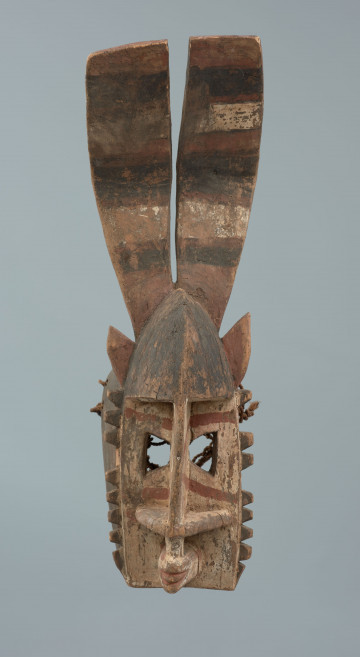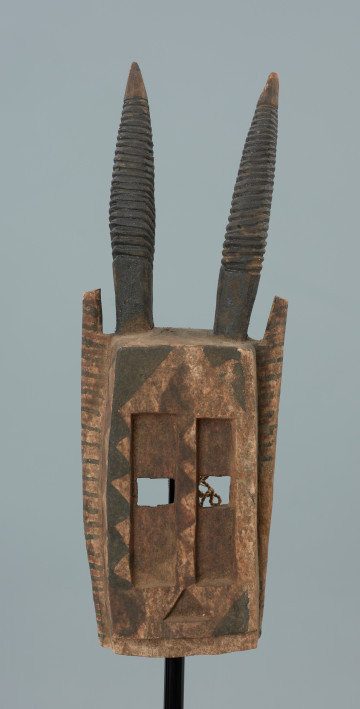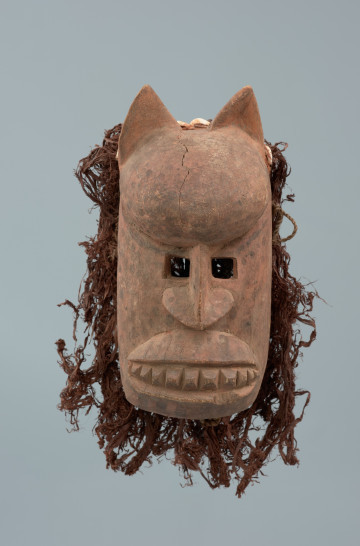
Gomintogo mask
między 1951 — 2000
National Museum in Szczecin
Part of the collection: Collection of Dogonian art
The hyena mask (tara, tata) depicting the head of the animal, with its characteristic large ears and spots and mottles in the colouring of its fur, like other Dogon masks dances during the Dama funeral rituals ending the long period of mourning for the deceased. According to myth, the prototype of the first carved hyena mask was the head of a female left behind by an embittered and angry lion. He devoured the rest of the hyena's body in revenge for the death of his offspring. The ringleader of the whole event was a hare, who showed the hungry widowed hyena the lion cub's hiding place and persuaded her to get an easy prey. The hyena was tempted, and the unscrupulous hare blamed her for the death of the young lion and tricked her out of the cave, where she hid from the distraught and enraged lion-father. In oral tradition, in numerous stories and fairy tales, the hyena is often accompanied by a hare. These characters are antagonistic. The stupid and awkward hyena loses every duel with the clever and cunning hare.The dancers are exclusively men, members of the Awa society. According to oral tradition, the masks come from the bush - a world inhabited by wild animals and other creatures dangerous to ordinary people. The secret of the masks was stolen by a woman from the bush, but in the village where she brought her trophy, it was decided that their power - difficult to control - was dangerous for women, and so they became the domain of men.The mask only forms a whole with the costume, which consists of indigo-coloured cotton self-made trousers and skirts and bracelets made of dyed plant fibres. Its prop is a stick held in the hand.
Ewa Prądzyńska
Author / creator
Dimensions
cały obiekt: height: 56 cm, width: 21 cm
Object type
sculpture, mask
Creation time / dating
Creation / finding place
Identification number
Location / status

między 1951 — 2000
National Museum in Szczecin

między 1976 — 2000
National Museum in Szczecin

między 1951 — 2000
National Museum in Szczecin
DISCOVER this TOPIC
Museum of King Jan III's Palace at Wilanów
DISCOVER this PATH
Educational path